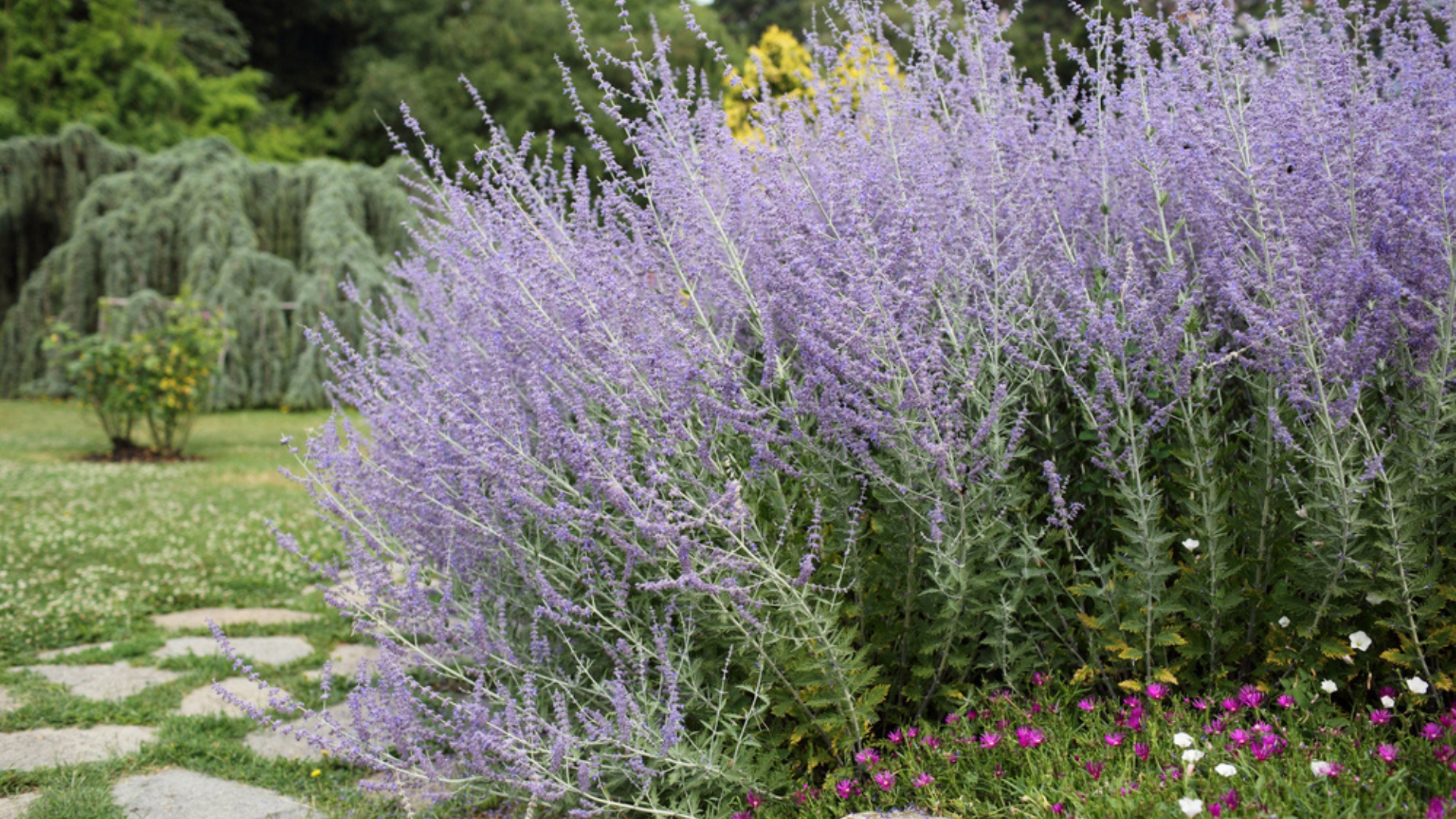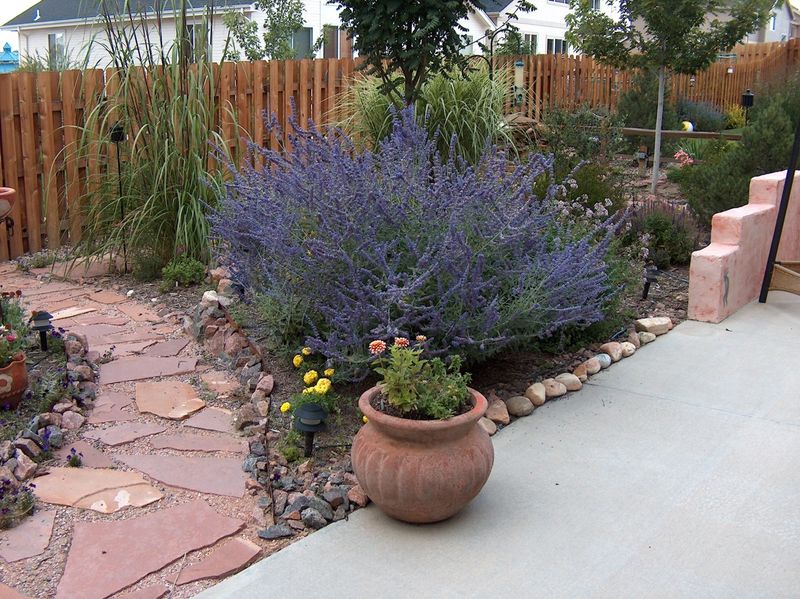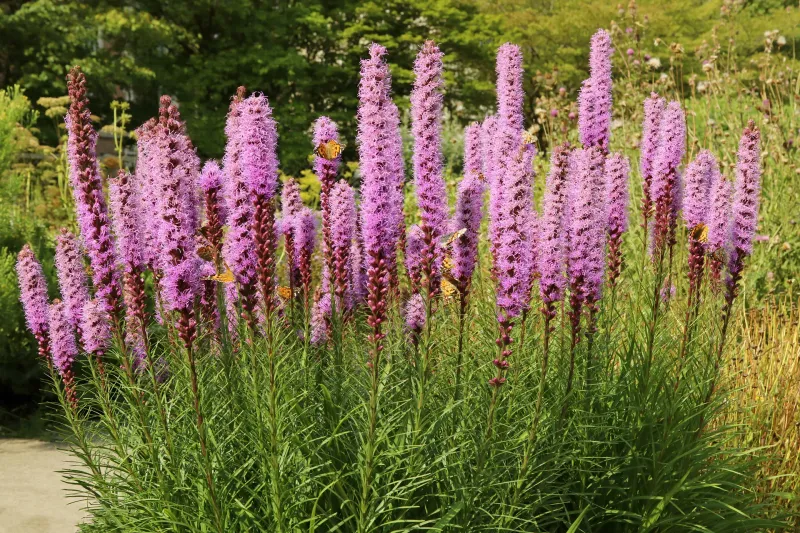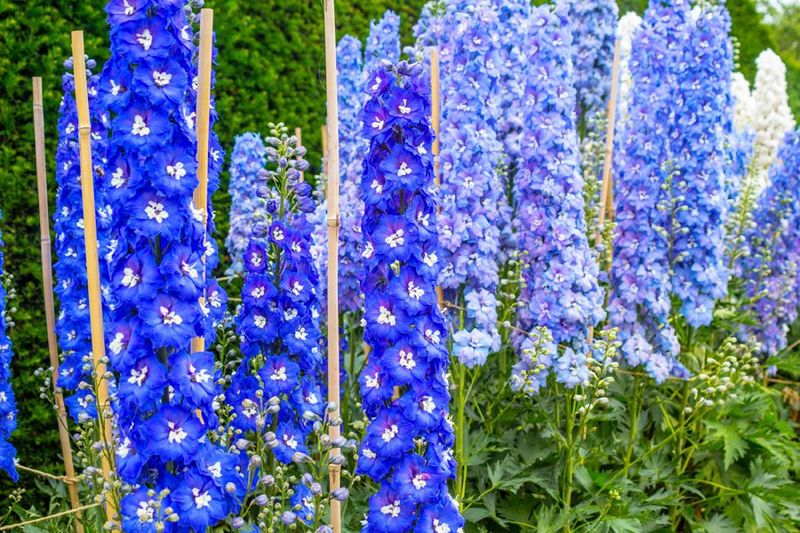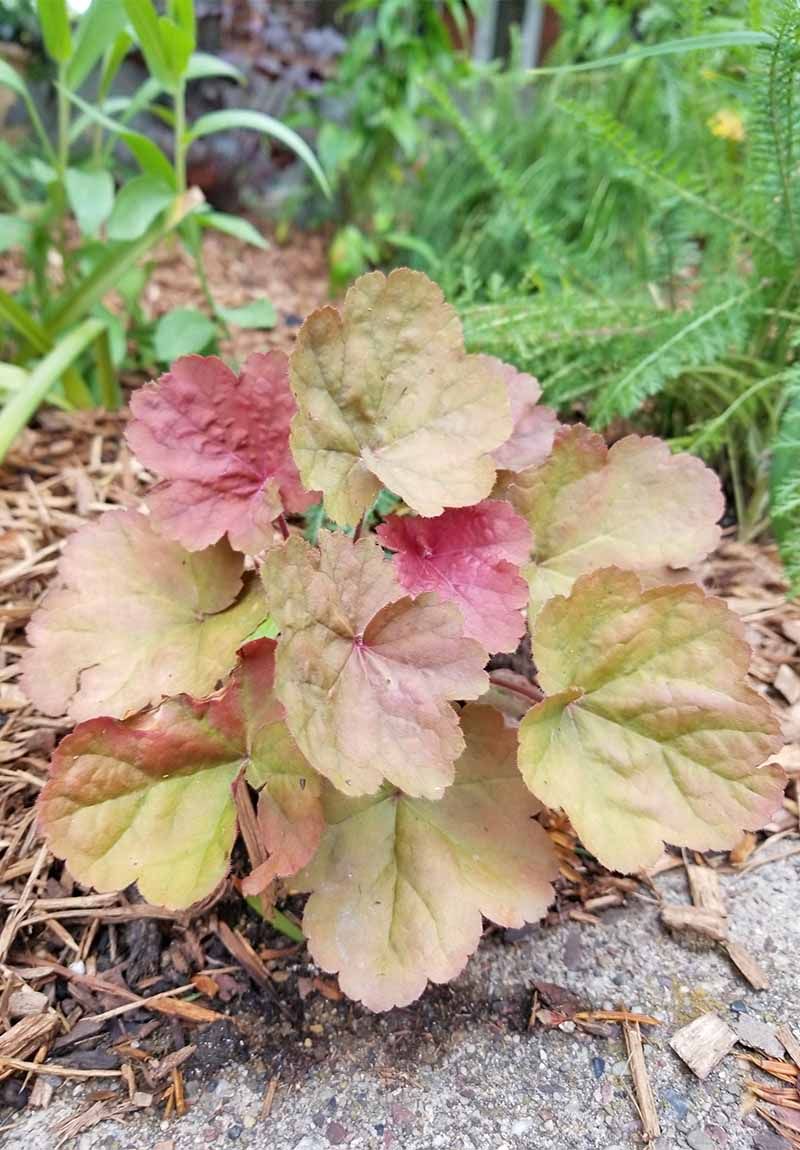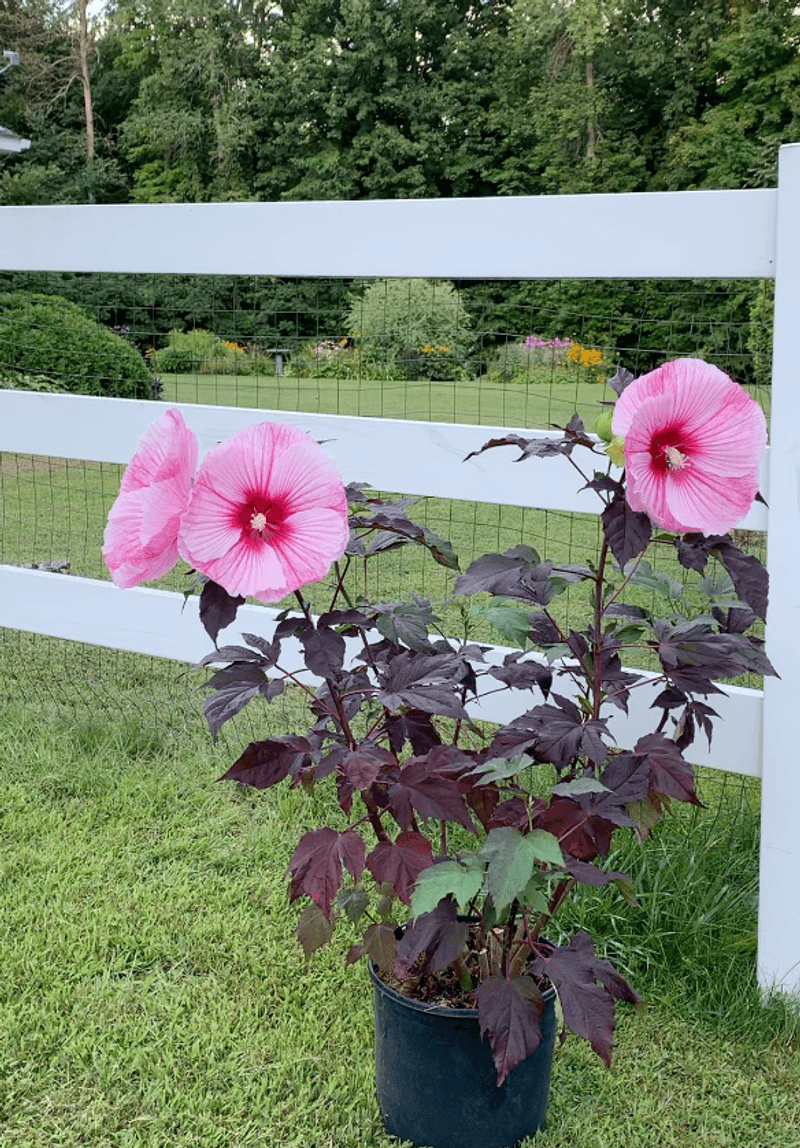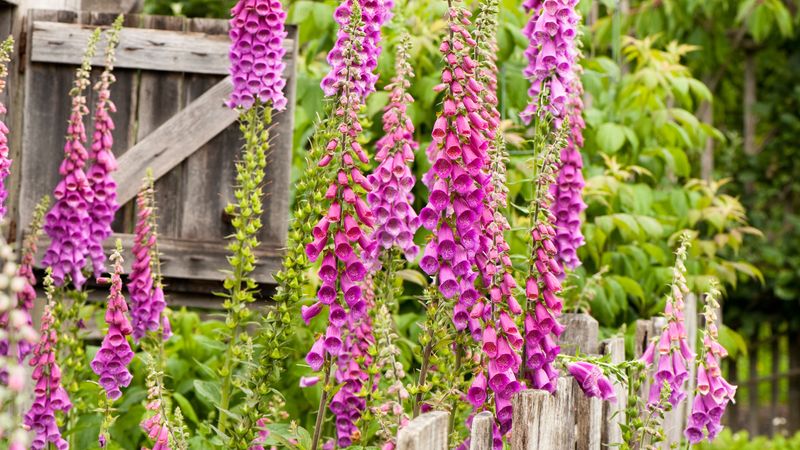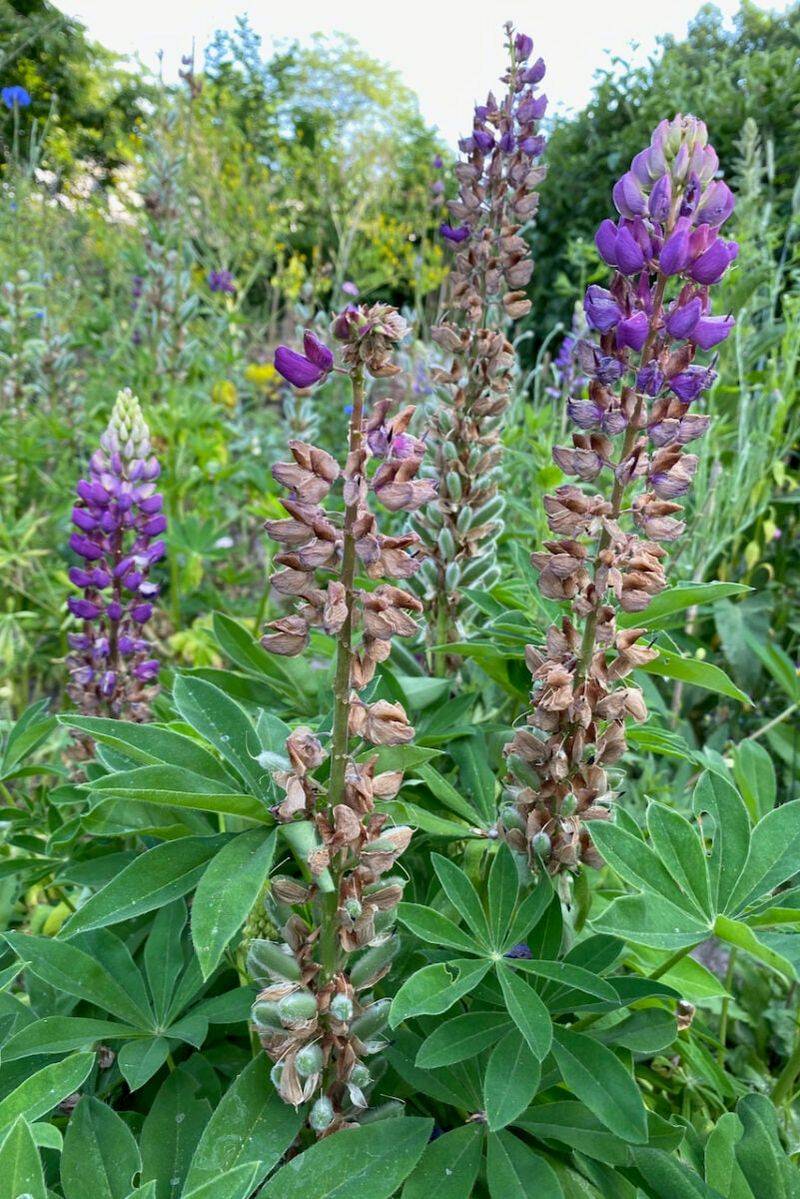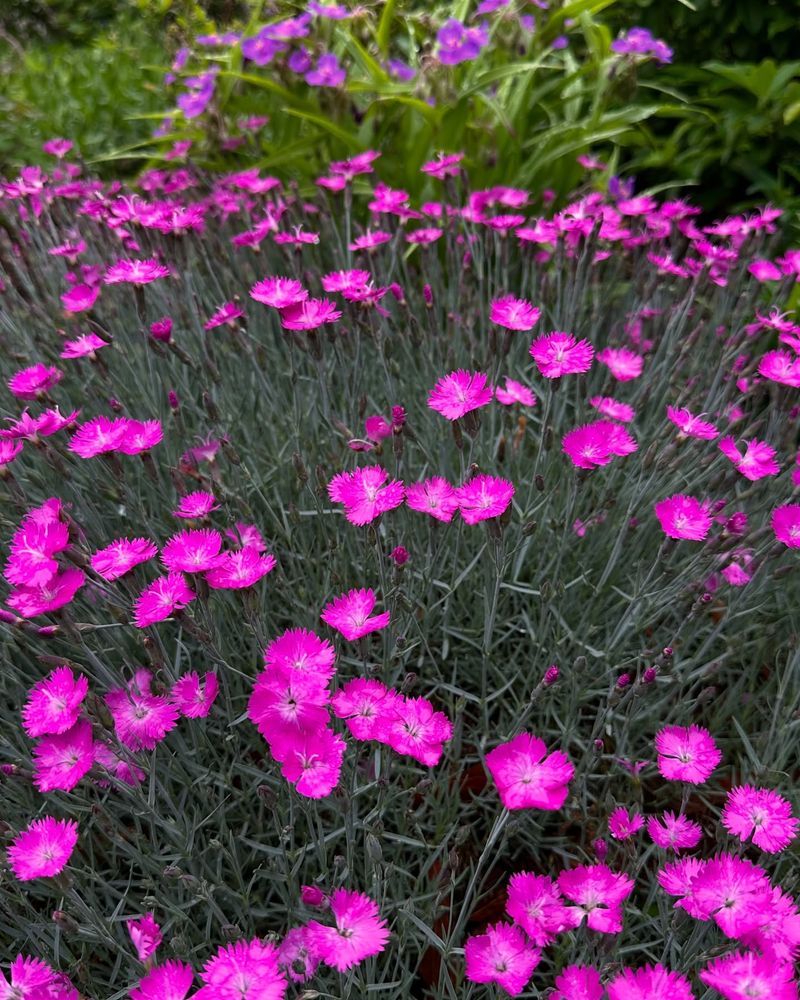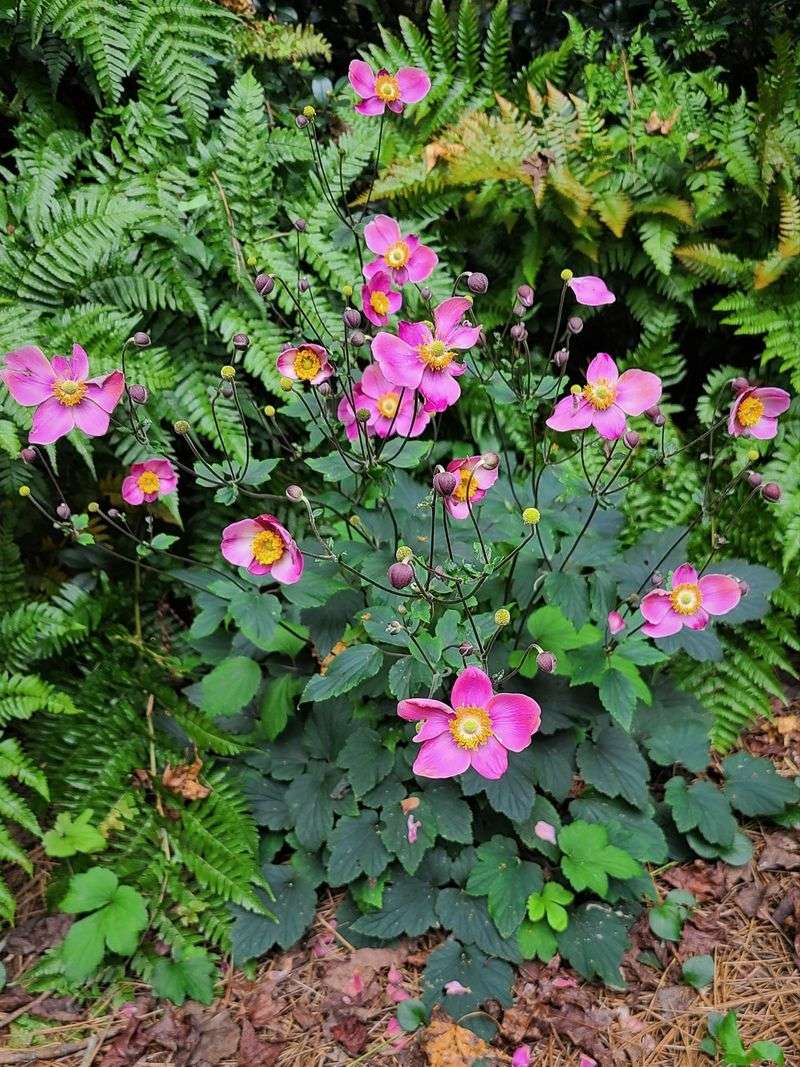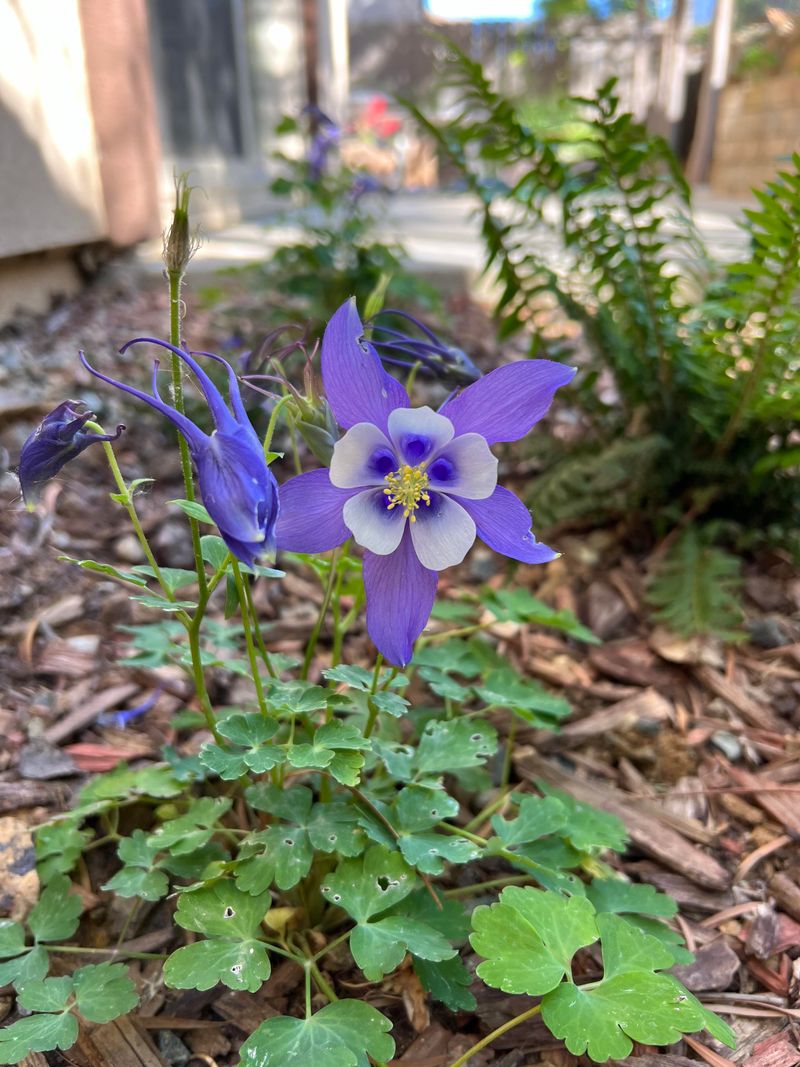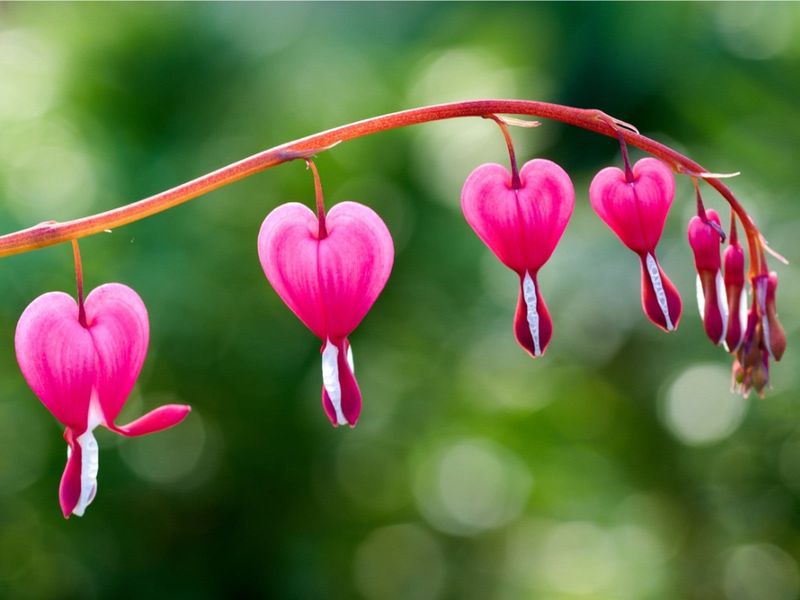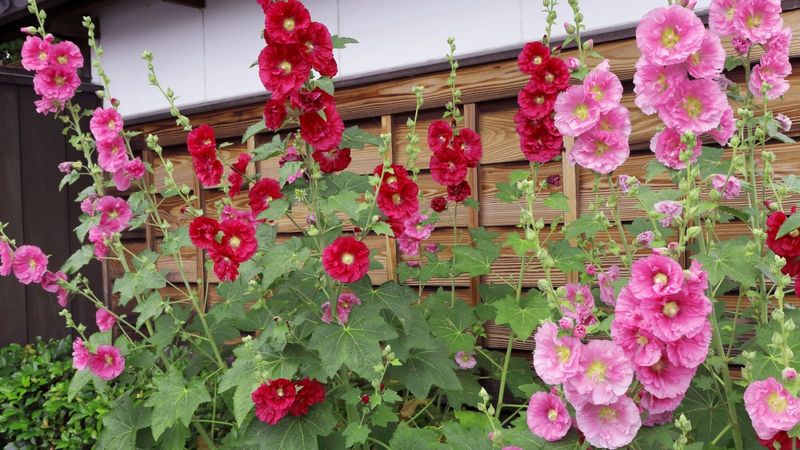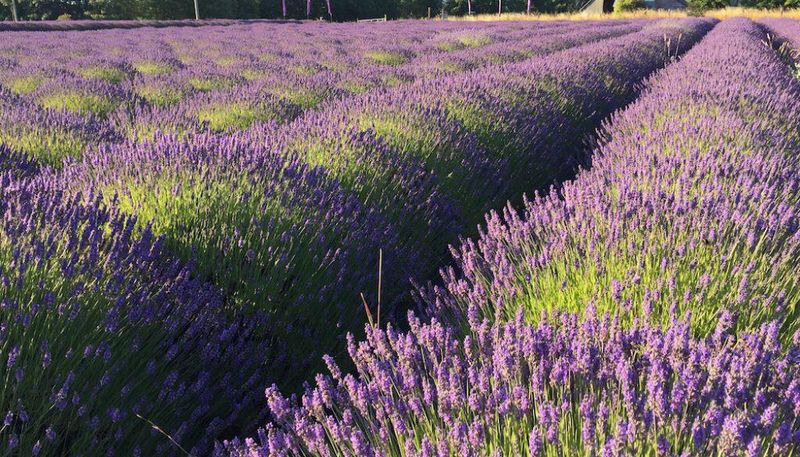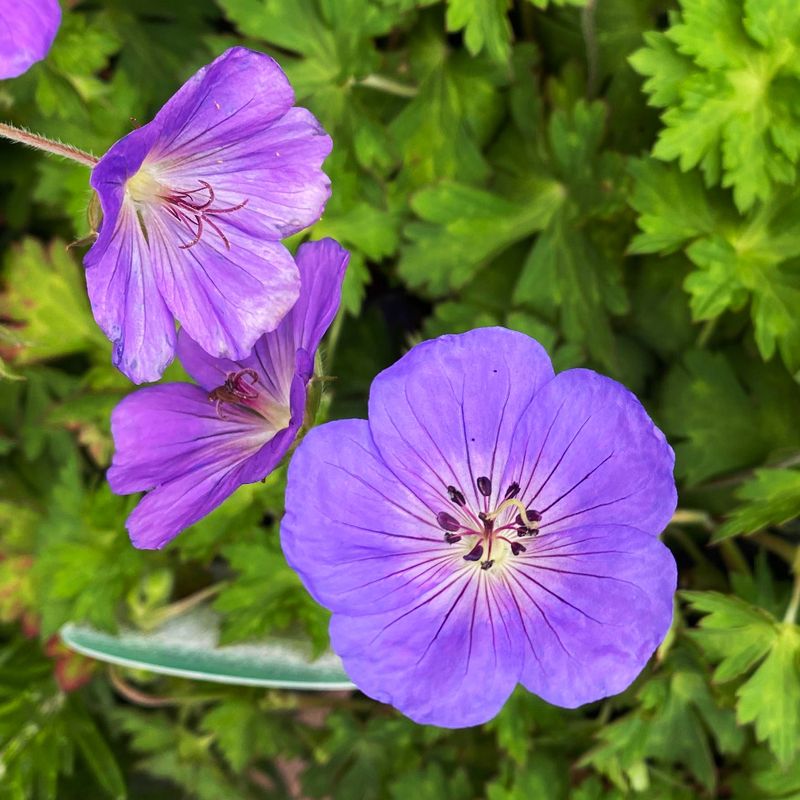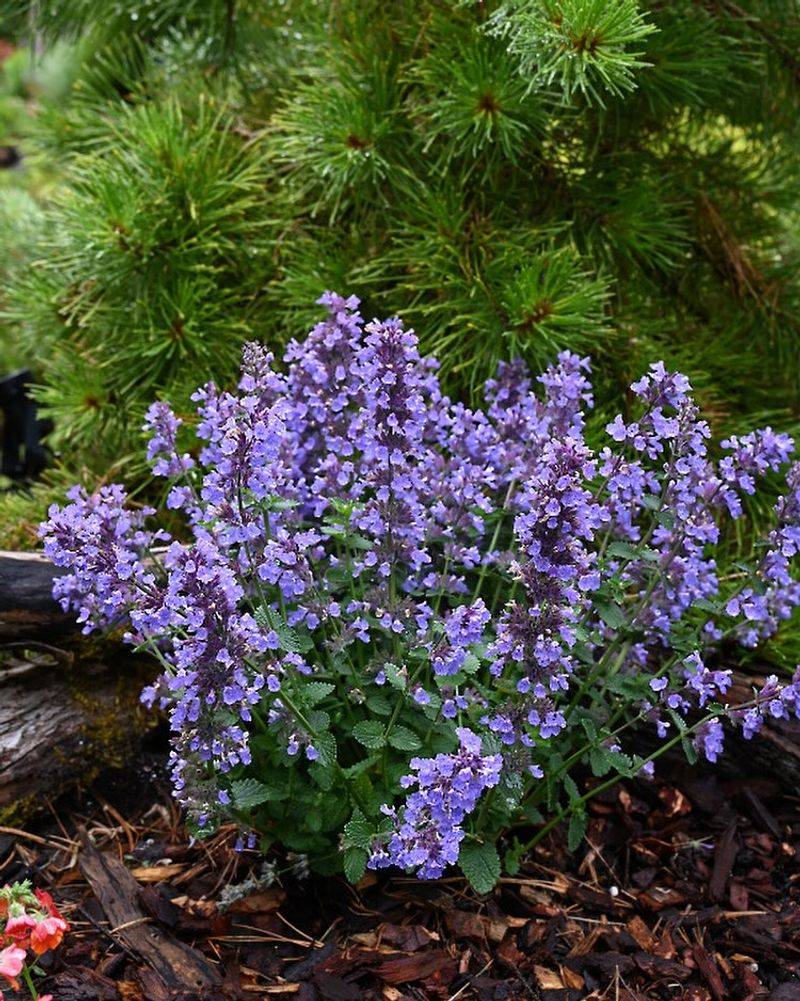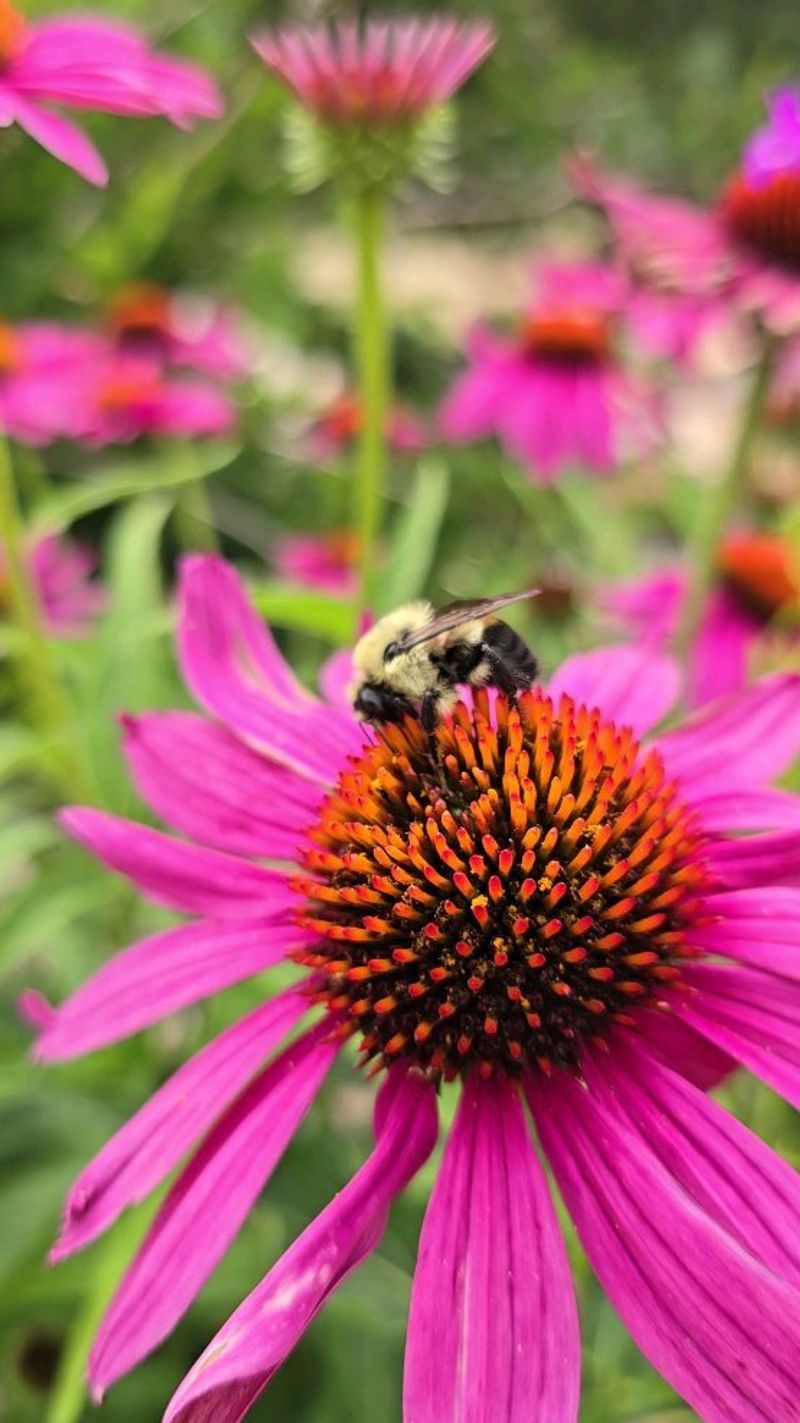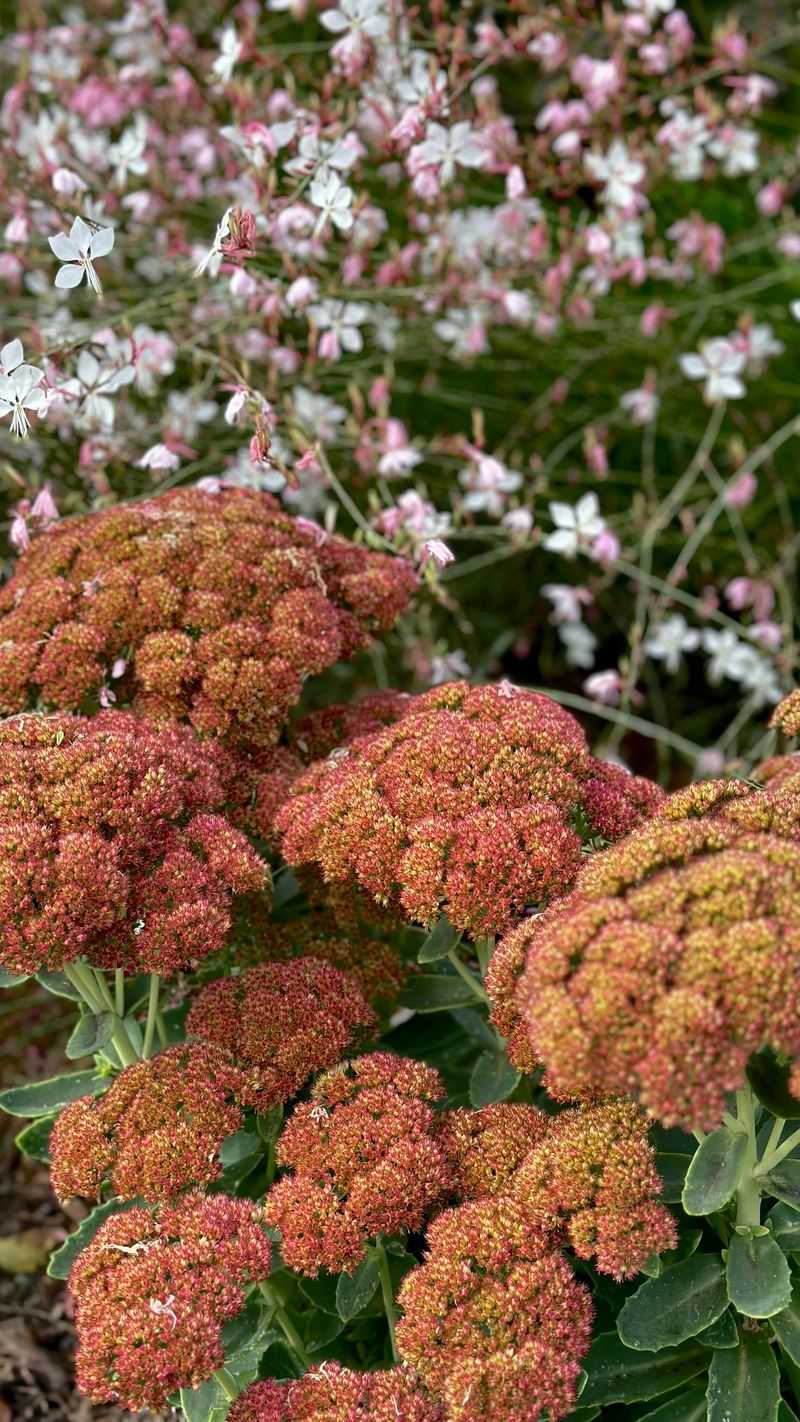Gardening can be full of surprises, and not always the good kind. We’ve all been there – excitedly planting what the catalog promised would be showstoppers, only to end up with lackluster performers that don’t live up to the hype.
Let’s explore some perennials that often disappoint despite their big promises, and discover reliable alternatives that truly deliver garden magic.
1. Russian Sage: The Sprawling Disappointment
Russian sage looks stunning in catalog photos with its silvery foliage and purple blooms. Reality check: this plant becomes a floppy, sprawling mess that flops over neighboring plants without proper staking.
Its aggressive growth habit means you’ll spend precious garden time keeping it contained. While drought-tolerant, its brittle woody stems often break during storms, leaving your garden looking disheveled rather than designed.
2. Liatris: The One-Week Wonder
Liatris promises tall, striking purple spikes that command attention in summer gardens. Unfortunately, the blooms fade remarkably fast, often lasting barely a week before turning brown and crispy.
The foliage isn’t particularly attractive either, with thin, grass-like leaves that easily get lost among other plants. For all the anticipation and garden space it requires, the brief flowering period hardly justifies its place in your perennial beds.
3. Balloon Flower: More Foliage Than Flowers
Balloon flower gets its name from the cute balloon-shaped buds that pop open into star-shaped blooms. The marketing photos never show how sparse these flowers actually are in real gardens!
Most varieties produce just a handful of blooms on each plant, leaving you with mostly unremarkable foliage. Adding insult to injury, the plants emerge late in spring, leaving mysterious empty spots in your garden that make you wonder if they’ve died over winter.
4. Delphinium: The High-Maintenance Heartbreaker
Tall, stately delphiniums with their magnificent blue spires grace countless garden magazine covers. What those glamour shots don’t reveal is their incredibly fussy nature and short lifespan.
Delphiniums demand perfect conditions—rich soil, consistent moisture, and protection from both wind and hot sun. Even with ideal care, most plants decline after just 2-3 years. Slugs and snails adore them, and a single summer storm can flatten their tall stems overnight.
5. Heuchera: The Color-Fading Letdown
Heuchera varieties boast spectacular foliage in catalogs—vibrant purples, corals, and chartreuse that promise to brighten shady spots. Fast forward to reality: many varieties quickly fade to muddy green, especially in hot, humid climates.
The plants often develop a woody, unattractive center within a couple of years. Their tiny flowers, while numerous, make minimal visual impact from a distance. For a plant marketed primarily for colorful leaves, the rapid color loss is particularly disappointing.
6. Hibiscus moscheutos: The Late Bloomer That Barely Blooms
Hardy hibiscus dazzles with dinner-plate sized blooms in catalogs. What they don’t mention is how painfully late these plants emerge in spring—often not until June when you’ve given them up for dead.
The flowering period is frustratingly brief compared to the long wait. Each individual bloom lasts just one day before shriveling. Japanese beetles frequently feast on both flowers and foliage, turning those few precious blooms into tattered remnants of what was promised.
7. Foxglove: The Here-Today-Gone-Tomorrow Tease
Foxglove’s tall, speckled bell-shaped flowers create a cottage garden dream—for exactly one year. Despite being sold as perennials, most foxgloves are actually biennials or short-lived perennials that disappear after flowering.
They require specific conditions to self-seed effectively, leaving many gardeners with empty spaces where their foxgloves once stood. The first-year rosettes take up garden space while producing no flowers, making the brief second-year show feel hardly worth the wait.
8. Lupine: The Three-Week Phenomenon
Lupine’s magnificent spires in rainbow colors seduce gardeners every spring. The harsh truth is that these beauties flower for a mere three weeks before turning to unattractive seed pods that dominate the plant for the rest of summer.
The foliage often develops powdery mildew in hot, humid weather. Most varieties struggle to survive more than 2-3 years, especially in clay soils. For all their catalog glory, lupines demand far more garden space than their brief flowering period justifies.
9. Dianthus: The Shrinking Violet
Dianthus varieties promise mounds of fragrant, frilly blooms that return year after year. The reality often falls flat as many varieties bloom heavily in spring, then produce only sporadic flowers for the remainder of the season.
The compact plants frequently develop bare centers over time, creating donut-shaped clumps rather than the lush mounds shown in catalog photos. Winter wetness causes many varieties to rot, while summer heat makes others go dormant. The promised perennial performance rarely materializes.
10. Japanese Anemone: The Garden Bully
Japanese anemones appear innocent with their charming pink or white flowers dancing on tall stems in fall catalogs. What those pretty pictures hide is their thuggish spreading habit that can quickly overtake smaller neighboring plants.
These aggressive spreaders send out underground runners that pop up yards away from the original plant. Their late-season flowers, while pretty, rarely justify the aggressive behavior. Once established, they’re incredibly difficult to remove completely from the garden.
11. Columbine: The Self-Seeding Disappointment
Columbines charm with their unique spurred flowers in delightful color combinations. The catch? The original plants are typically short-lived, lasting only 2-3 years in most gardens.
While they self-seed readily, the offspring rarely resemble their parents. Those special bicolor varieties revert to basic colors within a generation or two. The plants look ragged after flowering, with foliage that often develops unsightly leaf miner damage by mid-summer, leaving gaps in your carefully planned garden design.
12. Bleeding Heart: The Vanishing Act
Traditional bleeding heart dazzles with its romantic heart-shaped blooms in spring. What garden centers don’t emphasize is how quickly this plant disappears after flowering, leaving a gaping hole in your garden design by mid-summer.
The foliage yellows and dies back completely, often leading gardeners to accidentally dig up the dormant roots, thinking the plant has died. For a perennial that commands premium prices, its brief seasonal appearance hardly seems worth the investment and garden space.
13. Hollyhock: The Disease Magnet
Hollyhocks evoke cottage garden nostalgia with their towering flower spikes. The reality check comes when rust disease inevitably appears, covering the leaves with unsightly orange spots that spread upward through the plant.
By mid-season, the lower leaves are often completely browned and shriveled. Despite being sold as perennials, most hollyhocks behave as biennials, flowering once before declining or dying. The tall stems frequently need staking to prevent them from toppling during summer storms.
14. Lily of the Valley: The Slow-Starting Spreader
Lily of the valley promises delicate, fragrant white bells nestled among lush green leaves. The frustrating reality is how painfully slow it establishes—often taking several years before producing meaningful flowers.
Once happy, it switches gears entirely and becomes aggressively invasive, sending runners everywhere. The flowers, while charming, last barely two weeks. For the remaining 50 weeks of the year, you’re left with plain green leaves that yellow early in hot summers.
15. Lavender: The Short-Lived Mediterranean
Lavender’s silver foliage and purple spikes embody Mediterranean charm in catalog photos. The harsh reality in many regions is that lavender struggles with humidity and wet winters, often becoming woody and sparse after just 2-3 years.
The flowering period is surprisingly brief, with many varieties blooming for just a few weeks. Cold winters kill plants outright in northern zones, while hot, humid summers cause fungal issues in southern gardens. The promised long-lived, fragrant hedge rarely materializes outside perfect conditions.
16. Alternative: Geranium ‘Rozanne’ – The True Marathon Bloomer
Unlike disappointing perennials with brief shows, Geranium ‘Rozanne’ delivers months of true-blue flowers from late spring until frost. This hardy perennial forms a tidy mound that rarely needs staking or special care.
The foliage remains attractive all season, often taking on reddish tints in fall. ‘Rozanne’ tolerates both heat and cold admirably, performing well across climate zones. Unlike other geraniums that bloom briefly, this powerhouse keeps producing waves of flowers through summer heat and doesn’t need deadheading to keep blooming.
17. Alternative: Nepeta ‘Walker’s Low’ – The Indestructible Beauty
Catmint ‘Walker’s Low’ delivers everything other perennials merely promise. This tough plant produces waves of lavender-blue flowers from late spring through fall if cut back after the first flush.
Drought-tolerant and deer-resistant, it forms a tidy mound that rarely flops. The silvery foliage remains attractive even when not in bloom. Unlike temperamental lavender, catmint thrives in a wide range of conditions and soils, maintaining its good looks for many years without becoming woody or sparse.
18. Alternative: Echinacea ‘PowWow Wild Berry’ – The Reliable Coneflower
While many newer coneflower varieties disappoint with their short lifespans, ‘PowWow Wild Berry’ bucks the trend with remarkable staying power. This sturdy perennial produces a wealth of magenta-pink flowers that hold their color without fading.
The compact habit means no flopping stems, even after heavy rain. Unlike fussier varieties, this workhorse returns reliably year after year without disappearing. Pollinators flock to the flowers, and the seed heads provide winter interest and bird food when left standing.
19. Alternative: Sedum ‘Autumn Joy’ – The Four-Season Performer
Sedum ‘Autumn Joy’ delivers interest across all four seasons, unlike one-hit-wonder perennials. The succulent blue-green foliage emerges early in spring, forming attractive mounds that stand on their own as garden features.
Summer brings broccoli-like flower buds that transform into pink, then rusty-red flower heads by fall. The dried flower heads persist through winter, catching frost and snow for seasonal beauty. Virtually indestructible, this sedum thrives in poor soil and drought conditions where other perennials struggle to survive.
20. Alternative: Helleborus – The Winter Wonder
Hellebores deliver when other perennials sleep, producing elegant, nodding flowers in late winter when the garden desperately needs color. These tough evergreens maintain attractive leathery foliage year-round, providing structure even when not in bloom.
Modern varieties offer upward-facing flowers in colors ranging from white to pink, purple, and even yellow and black. Unlike temperamental perennials, hellebores thrive for decades with minimal care, gradually forming impressive clumps. Their resistance to deer and rabbits makes them truly low-maintenance garden stars.

